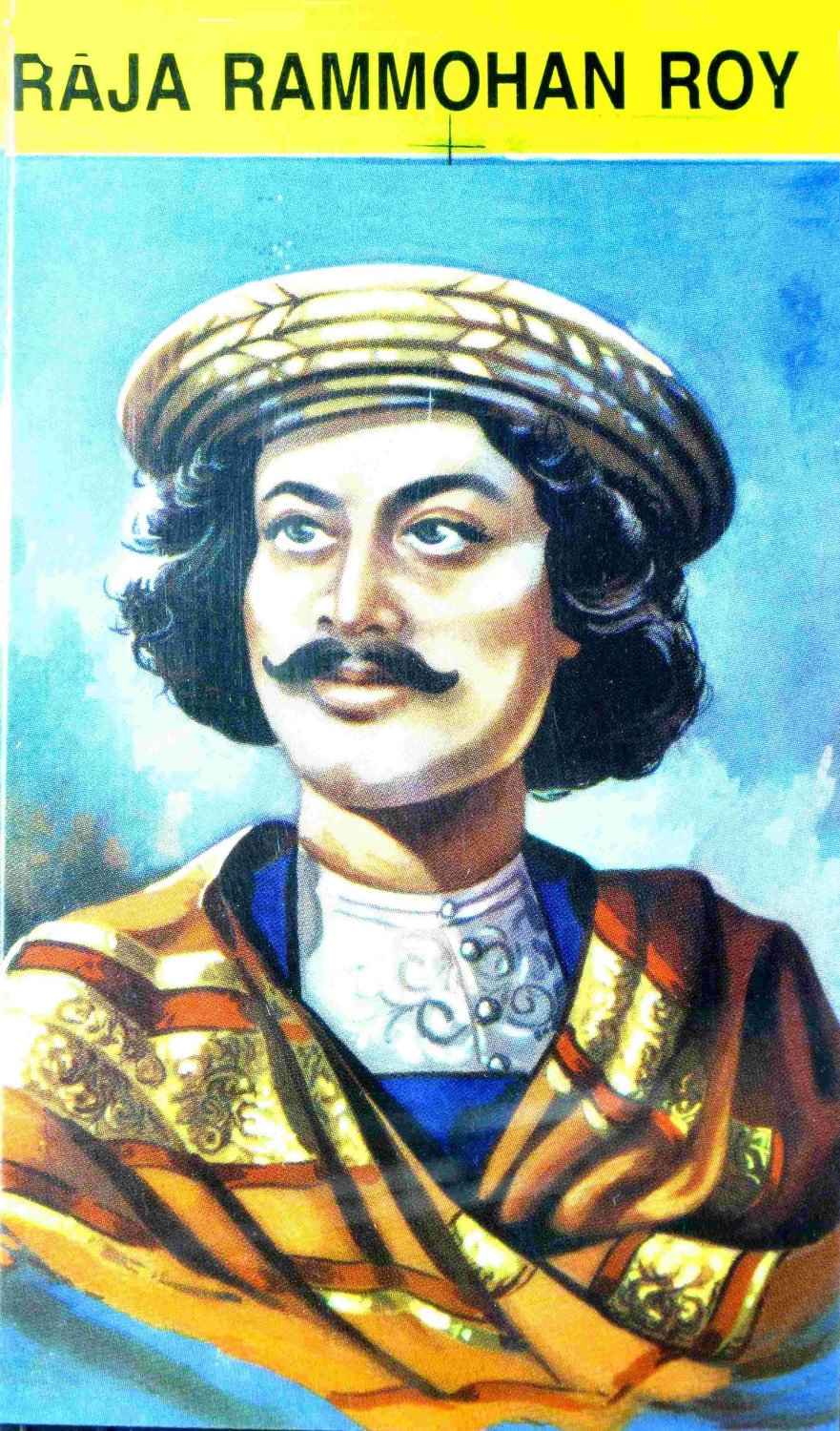Raja Ram Mohan Roy was popularly known as the Father of Indian Renaissance.
With his fight against social prejudice and concern for humanity, he inaugurated a new lease of life for Indians.
Early Life:
Raja Ram Mohan was born on 22nd May 1772 in a Brahmin family in the village of Radhanagar near Krislinanagar in Bengal.
ADVERTISEMENTS:
With his gifted brain, he learnt many languages and studied several scriptures of different religions like Hinduism, Islam, Christianity, Sufism, Budhism etc. He was influenced by the western culture and spread the message of unity of religions and rationality.

image source: 98a4980578083abe0fc6-26cdb33025b4deaf9c0a6e9a3953d227.r43.cf2.rackcdn.com/D5ADF83C-42AE-48E4-91BA-6A05B9886A91.jpg
He was against the practice of idol worship, blind faith and religious rituals. In 1803, his first book ‘Tuhfat-ul- Muwahhidin’ was published, where he argued for Monotheism Me founded the Atmiya Sabha in 1815 and on 20th. August 1828, the Brahmo Samaj was established. Through these institutions, he fought against orthodox Hindus and the fanatic Christian missionaries who challenged his ideas. Instead of establishing a separate religion, Rammohan wanted to reform Hinduism. He died on 27th September 1833 in England.
Reforms:
(а) Religious:
As a Hindu, Rammohan was well aware of the weak points from which Hinduism was suffering. On the basis of the Vedas and Upanishads, he provided a new life to Indian society. He interpreted religion with reason and opposed idol-worship and ritualism. He believed that every religion possesses the same truth. He criticized the ritualism of Christianity and refused to accept Christ as the incarnation of God. He wanted to simplify and to modernize the Hindu religion being influenced by the western concept of reason and scientific thought.
(b) Social:
ADVERTISEMENTS:
Raja Rammohan and his Brahmo Samaj attacked all the evil practices from which the society was suffering. He led a crusade against the practice of ‘Sati’, polygamy, child marriage, caste-system, untouchability, purdah system and use of intoxicants. He supported inter-caste marriages, women education, widow remarriages etc. His ideas, preaching’s and also the practical steps taken for this purpose had created a general awakening in Bengal.
(c) Educational:
The Brahmo Samaj adopted practical steps to propagate its religious and social ideas. It established various learned societies and educational institutions. Rammohan championed the cause of English language and western system of education and supported the move of Lord Macaulay. He started the English school, the Hindu College and the Vedanta College at Calcutta.

image source: saxonianfolkways.files.wordpress.com/2013/05/1280px-durga_puja_1809_watercolour_painting_in_patna_style.jpg
ADVERTISEMENTS:
Rammohan started publishing newspapers and magazines for which he was called the “Father of Indian Journalism”. He edited the Bengali newspaper, “Sambad Kaumudi”, and the Persian newspaper “Mirat-Ul-Akbar”. As a champion of the liberty of Press, he also opposed all sorts of restrictions imposed on it.
(d) Economic:
Though he himself belonged to a Zamindar background, yet he wanted the liberation of the poor tenants who were exploited by the Zamindars and their agents. Rammohan wanted the revenue to be fixed with the cultivators in Bengal. He opposed the heavy export duties imposed on Indian goods.
(e) Political:
With the glorification of ancient Indian culture, the Brahmo Samaj as an institution helped in developing confidence among Indians in their own religion. This confidence helped in the resurgence of Indian nationalism. Rammohan also believed in the freedom of man and opposed the racial superiority of Europeans. Though he did not demand independence for India, yet he fought for the civil liberties of the people.
Raja Rammohan Roy is called as the Father of Indian Renaissance due to his mass awakening and rational thinking. The Brahmo Samaj worked as a pioneer in revitalizing the Hindu society. Of course, the focus of the activities of the Brahmo Samaj was confined to Bengal. But it had a number of branches established in distant provinces like Punjab, Madras, Uttar Pradesh etc. He paved the way on which other Hindu social and religious reformers could tread.
Through his crusade against evil socio-religious practices, Rammohan envisaged a new social order. After his death, Dwaraka Nath Tagore took up the charge of the Brahmo Samaj. Subsequently it faced a division and declined.




